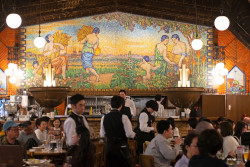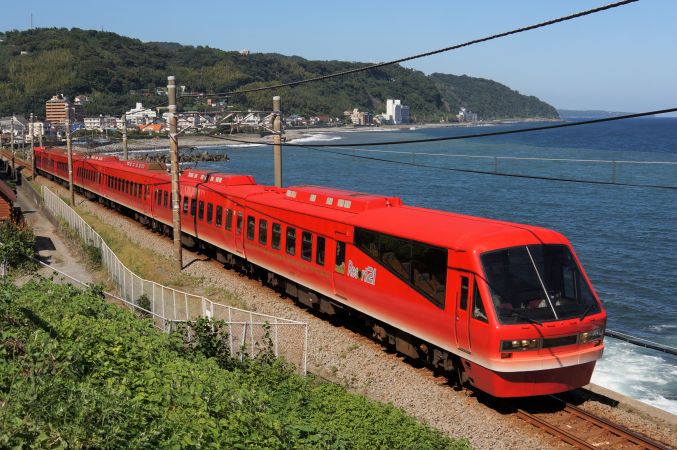
Take the panoramic slow train that runs along the east coast of the Izu Peninsula to Shimoda at the southern end. On the way to Atagawa, where a hot river flows, relax in the local Onsen and enjoy the food––delicacies of the sea and the mountains. From Shimoda terminal station, the little harbor where Commodore Perry landed, a small boat invites you to further remote islands.
The Izu peninsula erupts out into the Pacific Ocean at about 100 kilometers southwest of Tokyo and 50 to the south. The peninsula has a deep-green mountainous area in the center and a varied coastline. As one of the most famous resort areas in Japan, Izu is favored for its white-sand beaches in summer and for its sunny weather in winter. Year-round, they provide delicious seafood and access to a relaxing onsen.
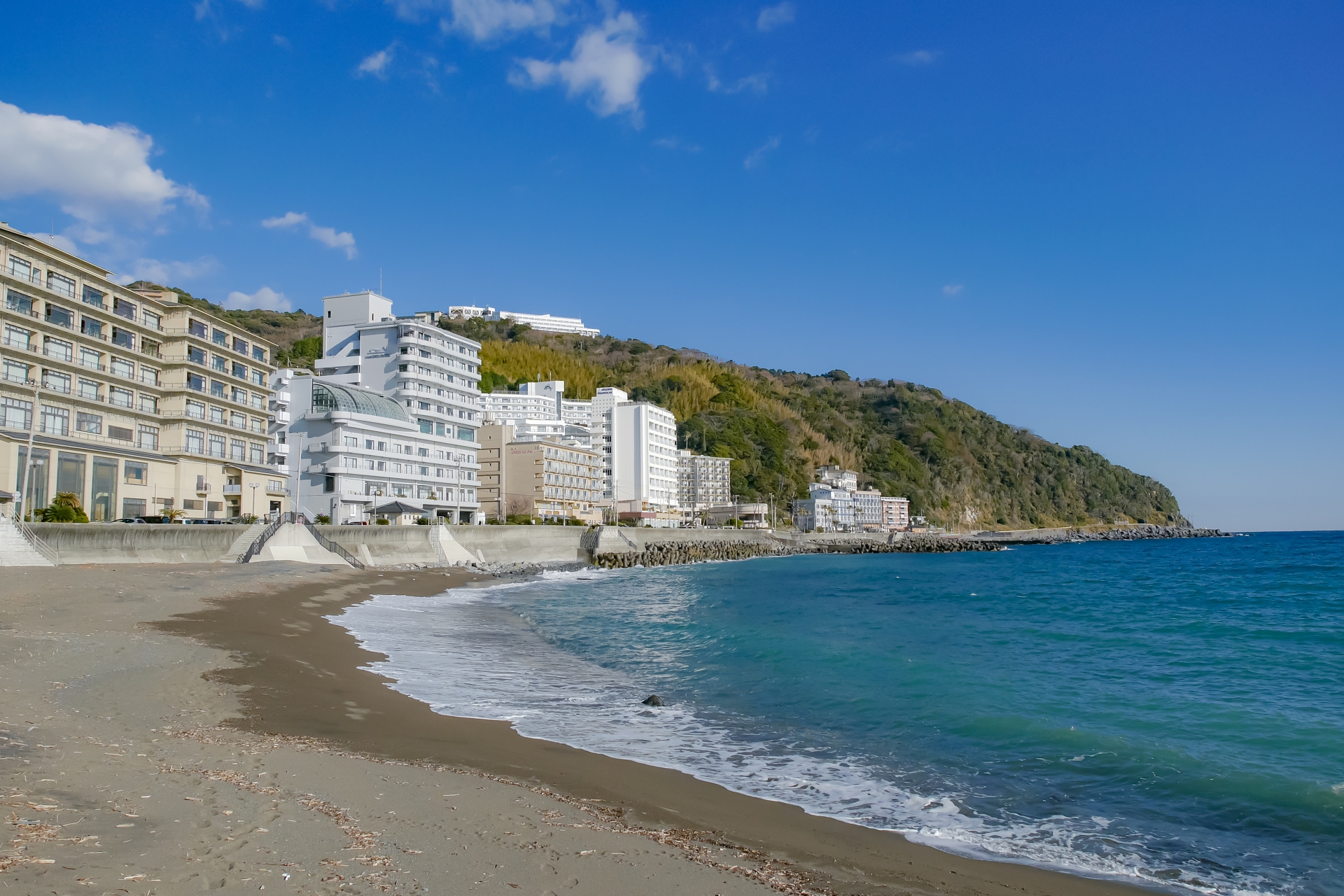
Atami (meaning hot sea), at the base of the peninsula, is only 30 minutes from Tokyo by Shinkansen. This well-known hot spring (Japan’s most famous) was in decline for a while, but luckily a decade ago, the beach was completely redesigned, the townscape renovated, and more and more people are now moving permanently to this area with the increased shift to remote work.
During the 1930s, before the war, Izu became famous in Japan largely because of “The Dancing Girl (Odoriko) of Izu” a masterpiece novel by Yasunari Kawabata – Japan’s first Nobel Prize winner for literature. It is the story of a young man’s encounter with a young, virginal dancer, and traveling entertainer, in Izu. The story has been made into movies many times, and now, references related to Odoriko are everywhere in Izu.
One of those references is the JR express train named “Odoriko” which goes from Tokyo to the southern tip of Izu. However, a more budget-friendly option is offered by the local train, Resort 21 – a relaxed and easier-going form of transportation. At Atami station, I saw the cute, red “Kinme (red snapper)” train and hopped aboard.
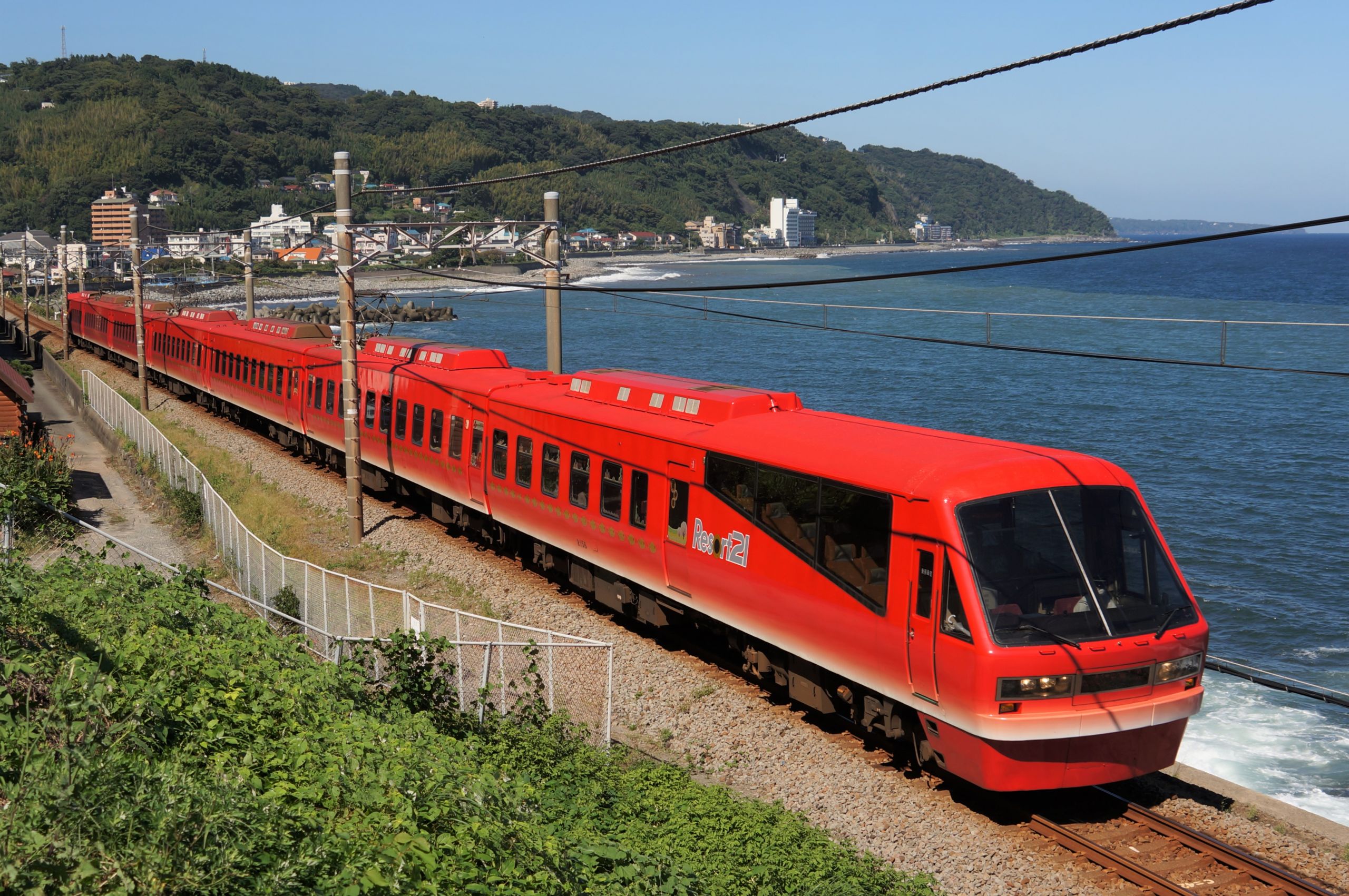
On this train, seats are unreserved as it is a ‘local train’. This “Kinme” is named after Izu’s celebrated kinmedai (sea bream -a kind of red snapper), and fun, red snapper motifs are visible everywhere. Rather uniquely, the train contains sofa-like seats directly facing the window to provide a beautiful view of the coastline. I also found it interesting to watch locals busily getting on and off at each station, giving you a local feel of action and cheerfulness.
After an hour-long train ride from Atami, you will arrive at Atagawa, a small onsen village situated on a slope. In contrast to Atami, which means hot sea, Atagawa’s name means hot river. Although there are only about 20 inns, Atagawa boasts the largest number of hot spring turrets on the Izu peninsula, and this is evident by the clouds of white steam everywhere. The temperature of the hot spring source reaches as high as 100°C.

From the small, wooden station, if you head down toward the sea, you will find many narrow roads that weave throughout the sloping land. Modern urban development plans like those in Atami have not been carried out in Atagawa, and the remaining townscape, half a century old, has a real retro atmosphere – Japanese people call it a ‘Showa period’ style: frugal and melancholic.
Take, for instance, the turret where you can make hot spring eggs, as it was used in the past. You soak an egg in the boiling hot spring for a few minutes, to get a soft-boiled egg with a slightly salty, mellow taste. In addition, the legend says that if you wash your money in the same hot spring, you will become rich. If you wish to test this tale yourself, you may use the metal basket that is there for the purpose of washing your cash. The coins get very shiny.
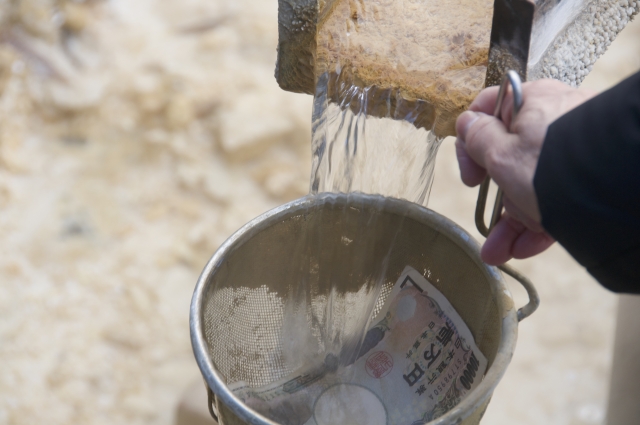
A statue of Dokan Ota, who is said to have discovered this hot spring, portrayed by a monkey, stands at the mouth of the river. He was a military commander, as well as a scholar, and was involved in the construction of the Edo Castle. The story goes that he discovered the benefits of the hot springs when he saw monkeys bathing and healing in the hot river. Just in front of the statue by the beach is the Atagawa Hot Park where visitors can relax in a (free of charge) footbath while looking out at the sea.
The newly renovated, elegant “Atagawa Ocean Resort” stands nearby overlooking the beach. All- 75- rooms have an ocean view. From the wall-to-wall windows, you can see the islands of Izu in front of you and the same panorama landscape is visible from the hotel’s open-air bath. The free-flowing hot springs, rich in meta silicic acid and slightly salty, are said to be effective for beautifying and curing the skin.

Famished by the onsen, guests may enjoy a buffet with many local seasonal products. The local specialty is braised kinme, a red sea bream, simmered in a salty-sweet broth. A walk on the beach at night is a great way to unwind, and there is also an authentic ayurvedic spa from Sri Lanka. Or if you prefer, you can sit and listen to the ocean waves at the poolside that extends out to the sea.
The next morning, woken up by the sun rising from the horizon, I took another local train, the “Kurofune” (black ship), from Atagawa down to Shimoda, an hour away. In 1854, Admiral Perry and his United States fleet entered the Shimoda port. This was a great historical moment as it was the first port of the Japanese archipelago to open after 200 years of seclusion. Today, at Perry Road, where old houses line up along the willow-lined river remain, with a small bust of the stern commodore to remember, understatedly, the event.
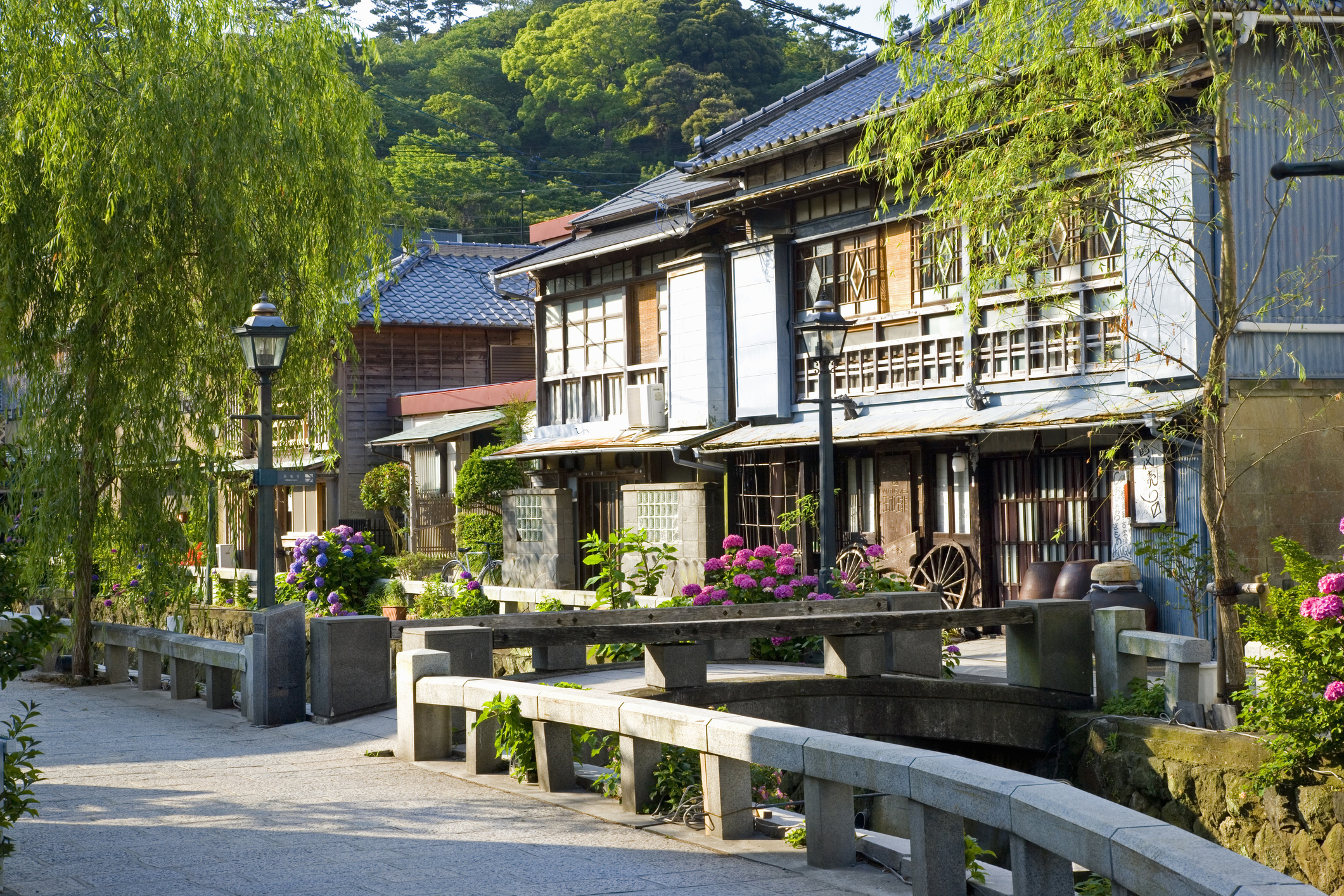
At the Port, another place of remembrance; the boat named after Perry’s “Black Ships” is moored. The port of Shimoda has lost its importance, but still, there is a ferry service to the Izu Islands. These are the seven remote and inhabited islands that stretch for 200 kilometers off the Pacific Ocean. Strangely enough, they belong to the Tokyo metropolis administration.
Of these, you can’t see the farthest Hachijojima from the port. Oshima looks surprisingly nearby in contrast. At the end of the novel, the dancing girl returns to her home, Ohshima, on a small boat from the port quay, without saying goodbye to the broken-hearted young man. As if guided by the dancer of Izu, my feet were also heading towards the ferry.
Traveling carefree on a slow train was leading me unexpectedly far.




